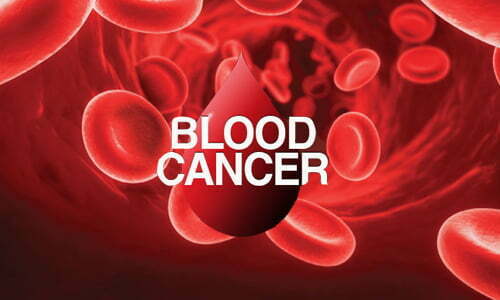Sometimes the entire is more than the sum of its parts. Researchers at Cold Spring Harbor Laboratory have observed that two mobile mutations, already dangerous on my own, enhance each other’s results, contributing to the improvement of the deadly blood most cancers acute myeloid leukemia (AML). CSHL Professor Adrian Krainer and his lab, together with Omar Abdel-Wahab at Memorial Sloan Kettering Cancer Center, exact how mutations of the genes IDH2 and SRSF2 are surprising companions-in-crime for causing AML.

Specifically, the presence of the IDH2 mutation enhances the errors because of the SRSF2 mutation, preventing cells within the bone marrow from maturing into the crimson and white blood cells an AML affected person desires to conquer the disease. The group is now exploring ways to fast shut this cooperation down, developing a powerful manner to treat blood cancer. This all started when we searched for affected person information in The Cancer Genome Atlas and saw that again. Again lethal instances of AML had each these mutations,” said Abdel-Wahab, a hematologist oncologist.
Before these studies, the simplest recognized similarity among the two mutations became that they’re involved in pre-cancerous symptoms. But in many instances, the purpose of the signs is not the motive of cancer itself. Just because you notice a mutation [in a sick patient’s cells] doesn’t sincerely display that it’s without delay contributing to the disorder,” Krainer said. To decide if the IDH2 and SRSF2 mutations are certainly at paintings in AML.
Abdel-Wahab joined forces with Krainer’s lab. The team precise their findings in a paper these days posted in Nature. The researchers knew that one of the two mutations in a query, the SRSF2 gene, causes errors in a critical procedure referred to as RNA splicing. Splicing converts messages from DNA, called RNA, into readable commands for a cell. Errors in this method can bring about the critical mobile malfunction. Researchers, in the beginning, did not think splicing defects driven via SRSF2 had been tied to AML because DNA assessments display the mutations are found in the simplest 1% of AML patients.
The Krainer lab, which makes a specialty of RNA splicing, located that this hassle is sincerely a lot extra commonplace, appearing about eleven% of the time in AML patients. Kuan-Ting Lin, a postdoctoral researcher from Krainer’s lab, discovered this through searching for symptoms of the SRSF2 mutation in RNA. His search could be likened to dusting for SRSF2’s fingerprints inside the gene’s real administrative center (RNA) rather than genuinely searching an entire workplace block (DNA). Dr. Lin could be a very affected person, looking at huge quantities of facts and choosing up distinct styles and making connections between things that aren’t obvious to anyone,” Krainer said.
Further experiments from Abdel-Wahab’s lab discovered that the severity of the recognized SRSF2 splicing mistakes could be more suitable through the presence of a 2nd mutation, IDH2, resulting in even extra faulty blood cells. So in a few ways, those two genes, when faulty, are cooperating,” Krainer stated. “Now that we do recognize about this interdependence, we may additionally discover points where we can intrude.
This research changed into supported in-component by way of the Aplastic Anemia and MDS International Foundation and the Lauri Strauss Leukemia Foundation, in addition to Cancer Research UK and the Welch Foundation. The additional guide comes from the NIH/NHLBI, the Leukemia and Lymphoma Society, The Oglesby Charitable Trust, the Dept. Of Defense Bone Marrow Failure Research Program, the Starr Foundation, the Henry & Marilyn Taub Foundation, the Edward P. Evans Foundation, the Josie Robertson Investigator Program, the Leukemia and Lymphoma Society, and the Pershing Square Sohn Cancer Research Alliance.
Reference: “Coordinated alterations in RNA splicing and epigenetic regulation power leukemogenesis” utilizing Akihide Yoshimi, Kuan-Ting Lin, Daniel H. Wiseman, Mohammad Alnoor Rahman, Alessandro Pastore, Bo Wang, Stanley Chun-Wei Lee, Jean-Baptiste Micol, Xiao-Jing Zhang, Stephane de Botton, Virginie Penard-Lacronique, Eytan M. Stein, Hana Cho, Rachel E. Miles, Daichi Inoue, Todd R. Albrecht, Tim C. P. Somerville, Kiran Batta, Fabio Amaral, Fabrizio Simeoni, Deepti P. Wilks, Catherine Cargo, Andrew M. Intlekofer, Ross L. Levine, Heidi Dvinge, Robert K. Bradley, Eric J. Wagner, Adrian R. Krainer and Omar Abdel-Wahab, 2 October 2019, Nature.



